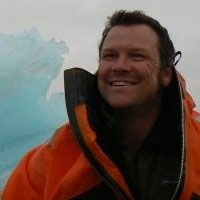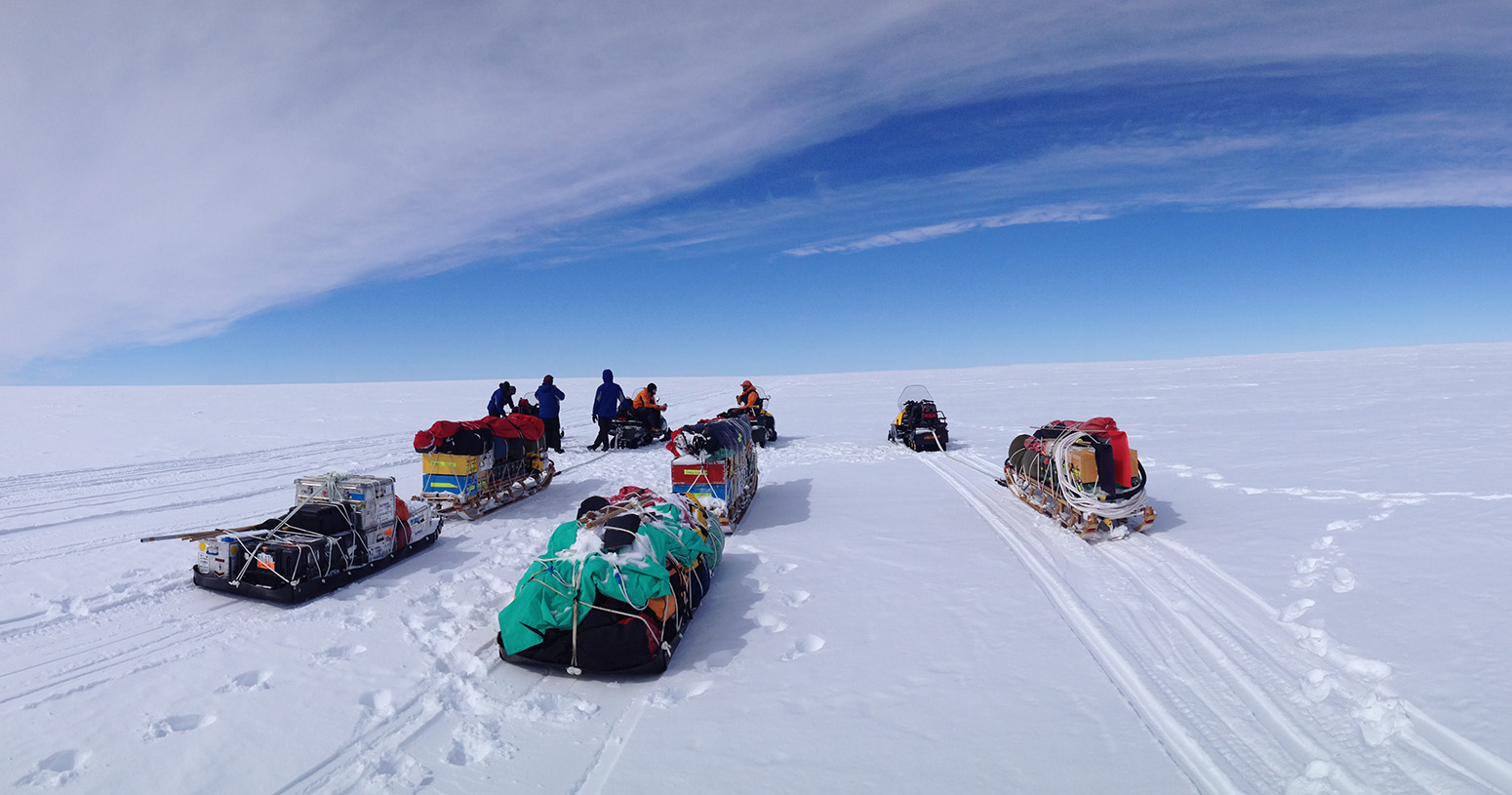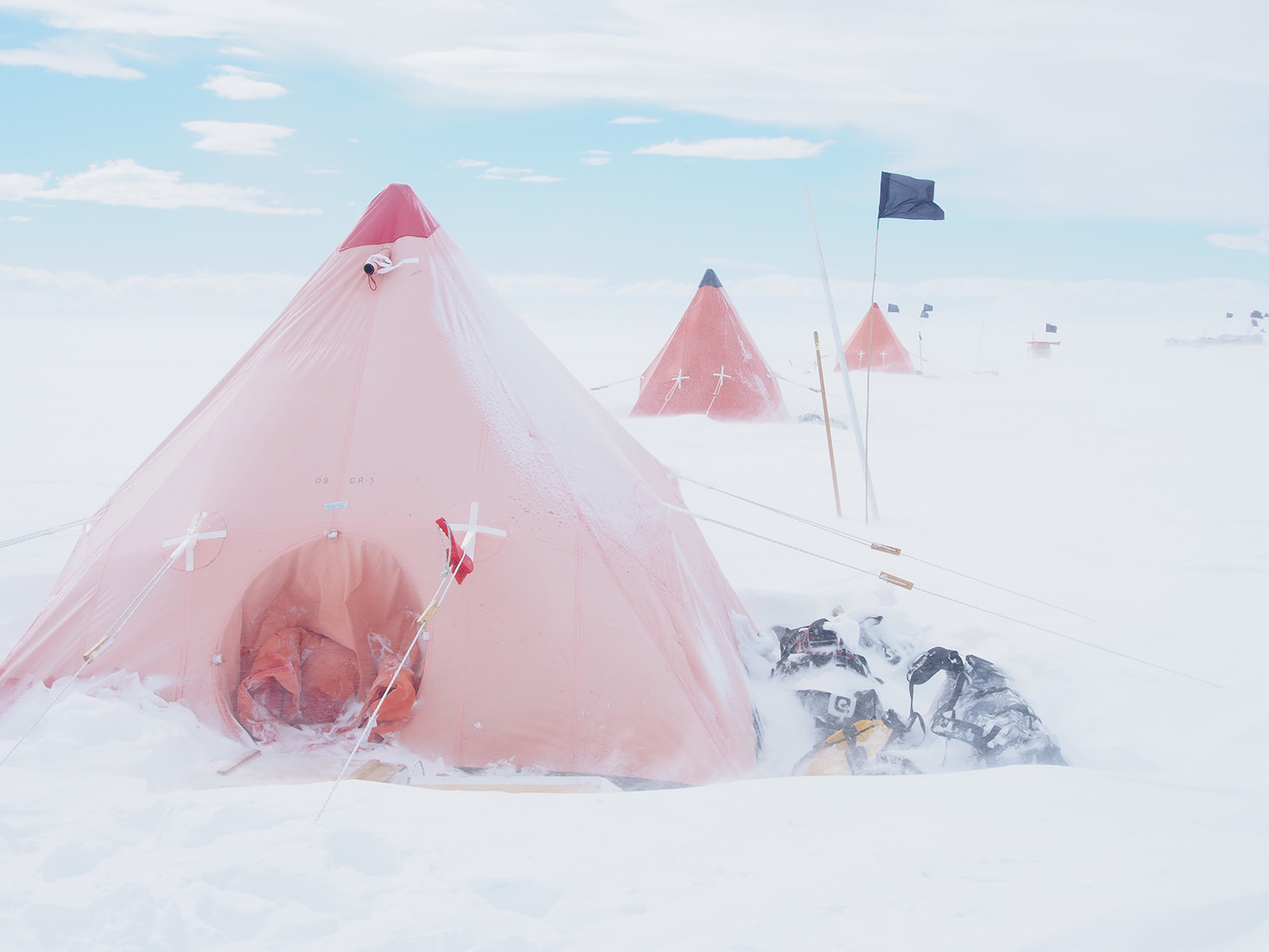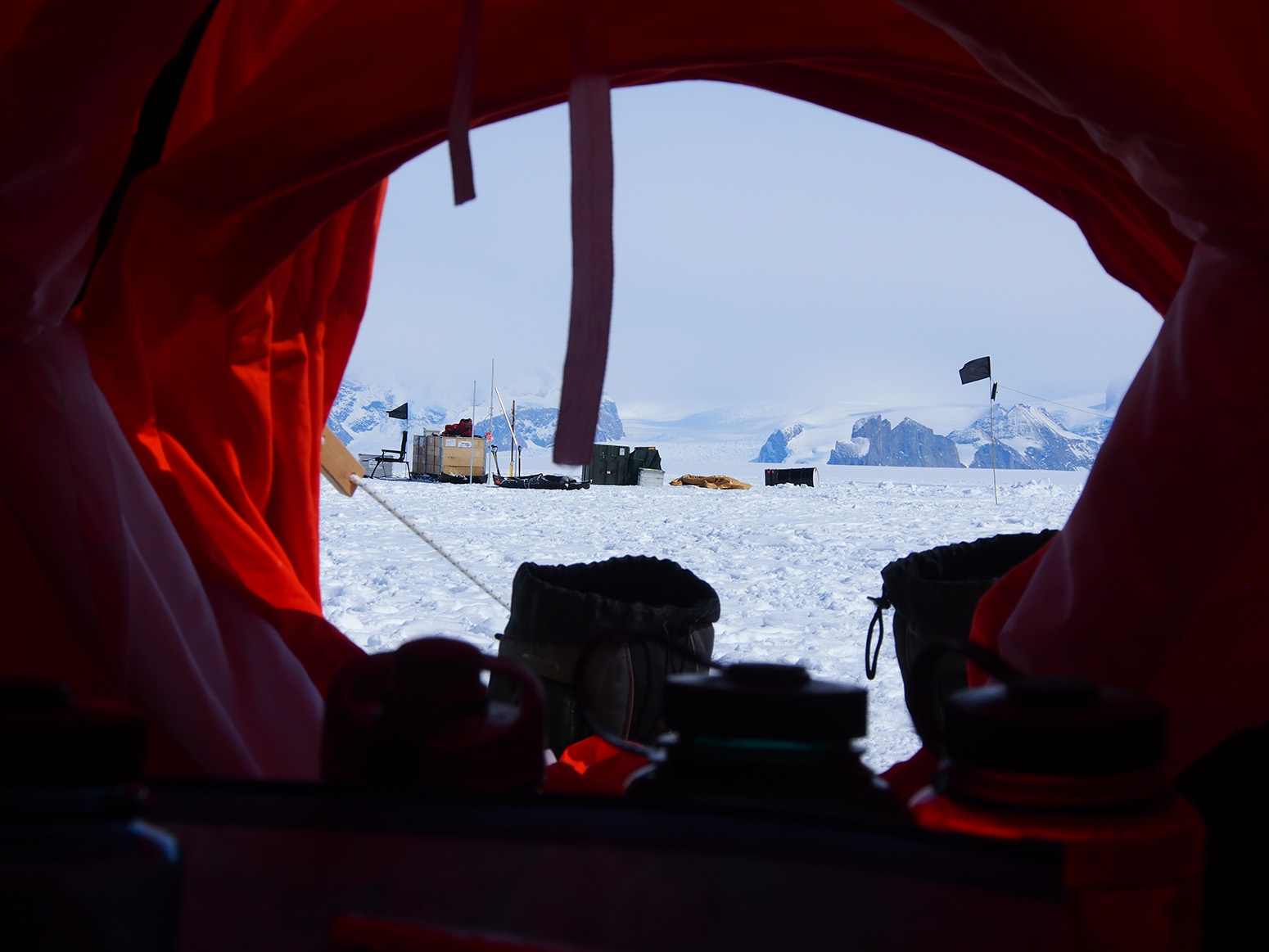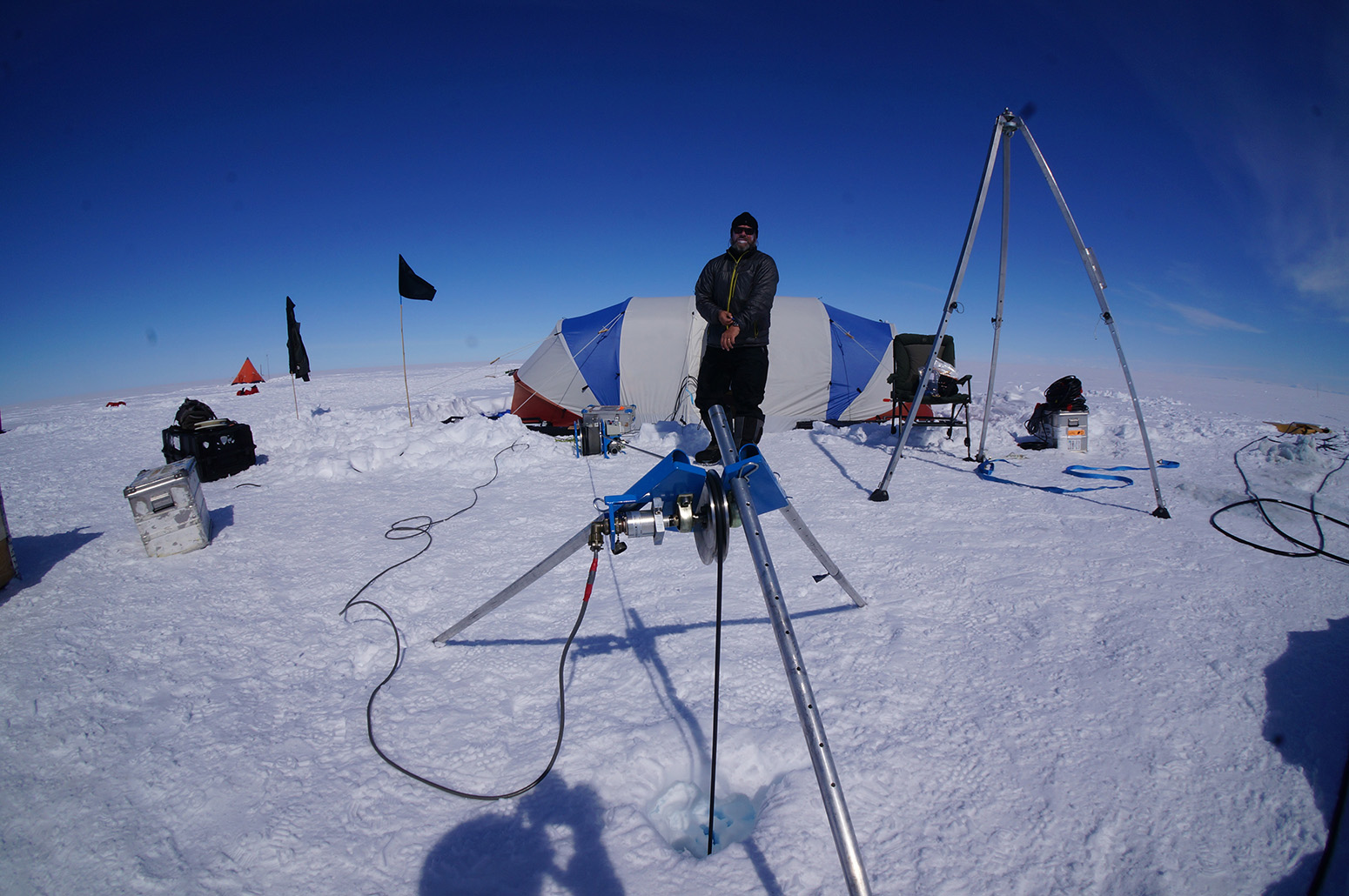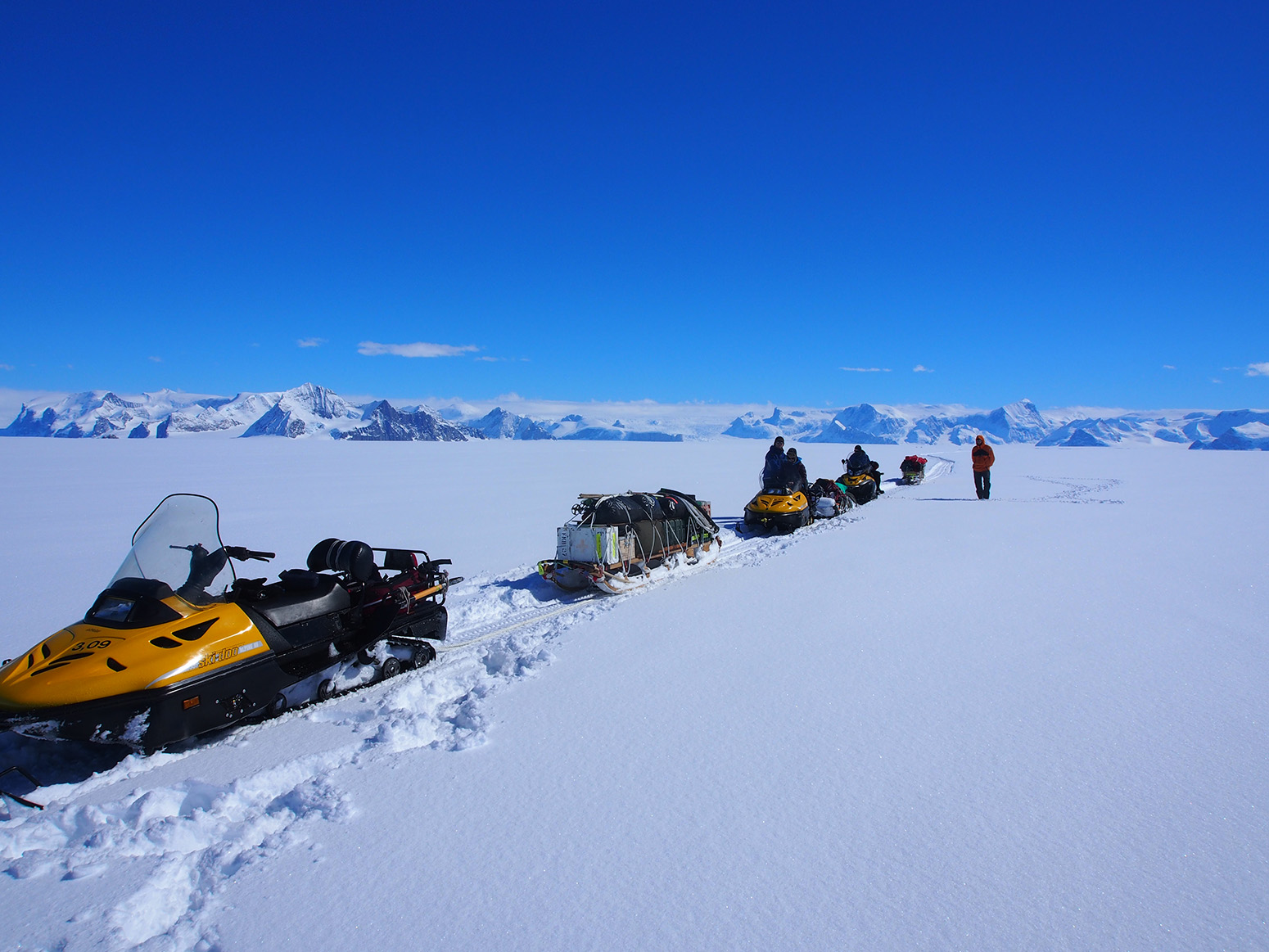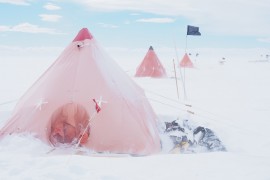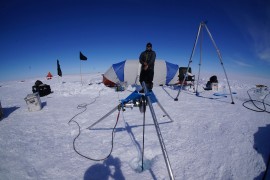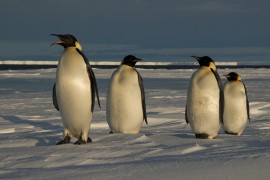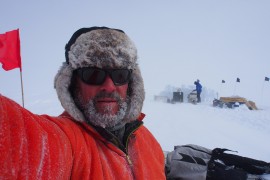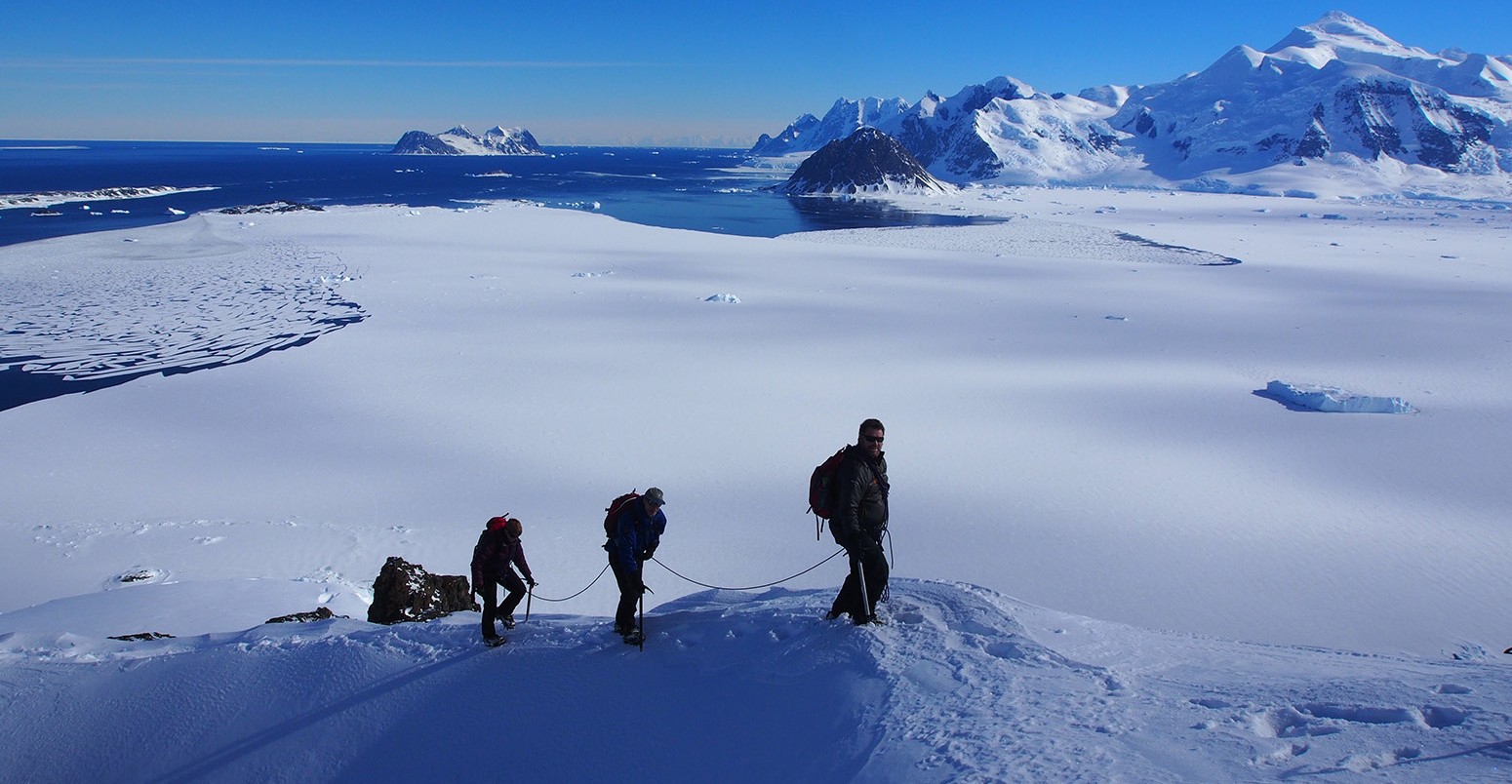
Discovery exposes fragility of Antarctica’s Larsen C ice shelf
Roz Pidcock
06.14.16Roz Pidcock
14.06.2016 | 4:57pmScientists have unearthed a 100m-thick river of ice beneath Antarctica’s Larsen C ice shelf, which they fear could accelerate its path to eventual collapse.
A team led by Prof Bryn Hubbard, director of the centre for glaciology at Aberystwyth University in Wales, lived on the ice shelf for several months examining what it looks like from the inside.
Their new paper describes how the layer of solid ice could be speeding up the flow of ice to the ocean, potentially leading Larsen C towards a similar fate to its now-collapsed sister ice shelves, Larsen A and B.
In January, Hubbard was awarded the prestigious Polar Medal in recognition of his services to polar science. He joins an illustrious list of explorers and pioneers, with Captain Robert F Scott, Sir Ernest Shackleton, Sir Edmund Hillary and Sir Ranulph Fiennes among its former recipients.
Carbon Brief has been speaking to Hubbard about his new research, the future of Antarctica and his reflections from a life spent on the ice.
‘Catastrophic breakup’
For more than 25 years, Hubbard has been studying the world’s icy expanses, venturing out each year to live and work on the ice for months at a time. He tells Carbon Brief:
Hubbard’s latest study has taken him to Larsen C ice shelf in Antarctica, a floating mass of ice protruding from the Antarctica Peninsula in the northern part of the continent.
Several major ice shelves have collapsed almost completely, losing the vast majority of their mass in just a few months. The most widely reported of these “catastrophic breakup events” were the Larsen A and B ice shelves, which collapsed in 1995 and 2002, respectively.
Larsen C is the next ice shelf in line, geographically-speaking. It is also the largest of the three sister shelves, with a surface area two and a half times the size of Wales.
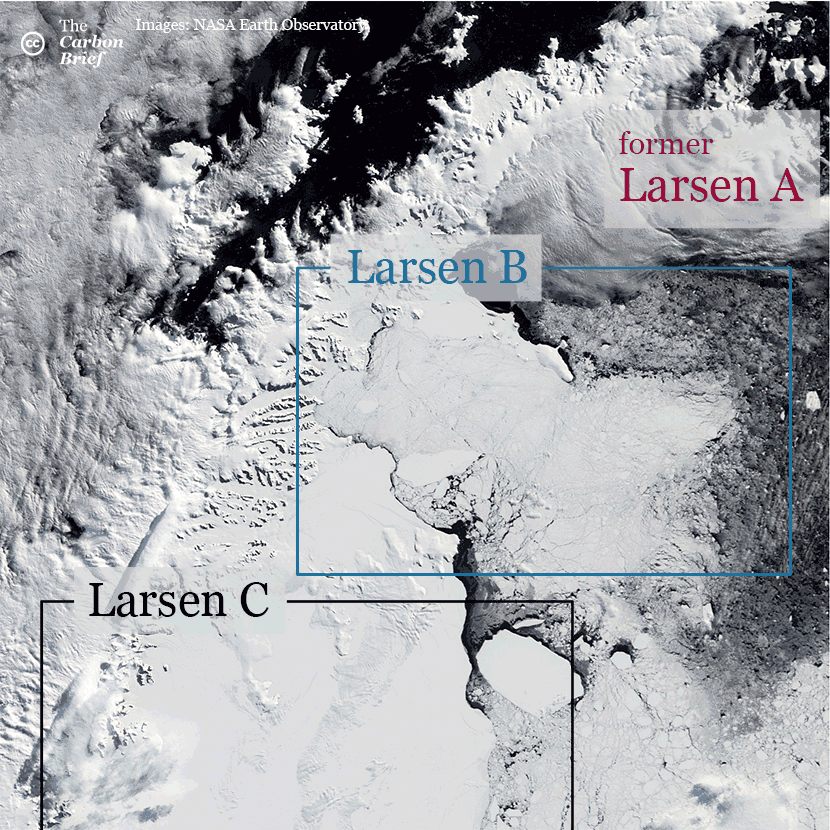
Credits | Images: NASA Earth Observatory. Gif: Rosamund Pearce for Carbon Brief.
Meltponds
The Antarctic Peninsula is one of the fastest warming places on Earth. Temperatures have risen by 2.5C in the past 50 years. Warmer air is causing the surface of the ice to melt, forming pools of water known as “meltponds”.
Meltponds tend to form in a line “like a string of sausages” and are thought to have contributed to the collapse of ice shelves in the past, including Larsen B. Hubbard tells Carbon Brief:
Until now, scientists had suspected that meltponds exerted stress through the sheer weight of the water pushing down on the ice below it. But Hubbard and his team wondered if there was a different explanation. He tells Carbon Brief:
Drill deep
With the logistical support of the British Antarctic Survey, Hubbard and his team camped on the ice in traditional ‘Scott’ tents for several months in the summer of 2014/15.
The team drilled a 100m-long borehole in a part of the Larsen-C ice shelf called Cabinet Inlet, where scientists first spotted meltponds 15 years ago.
Just a few metres below the surface, they struck upon a layer of solid ice about 100 metres thick, formed as water from the meltponds percolates through the ice and refreezes.
The discovery was startling, says Hubbard, not only because of the ice layer’s thickness but because of its proximity to the surface. He tells Carbon Brief:
At these shallow depths in other ice sheets, such as Greenland and East Antarctica, scientists have found compacted snow, stacking up in layers as more snow falls on top. Solid ice is usually found much deeper, more like 50-70m below the surface, Hubbard explains.
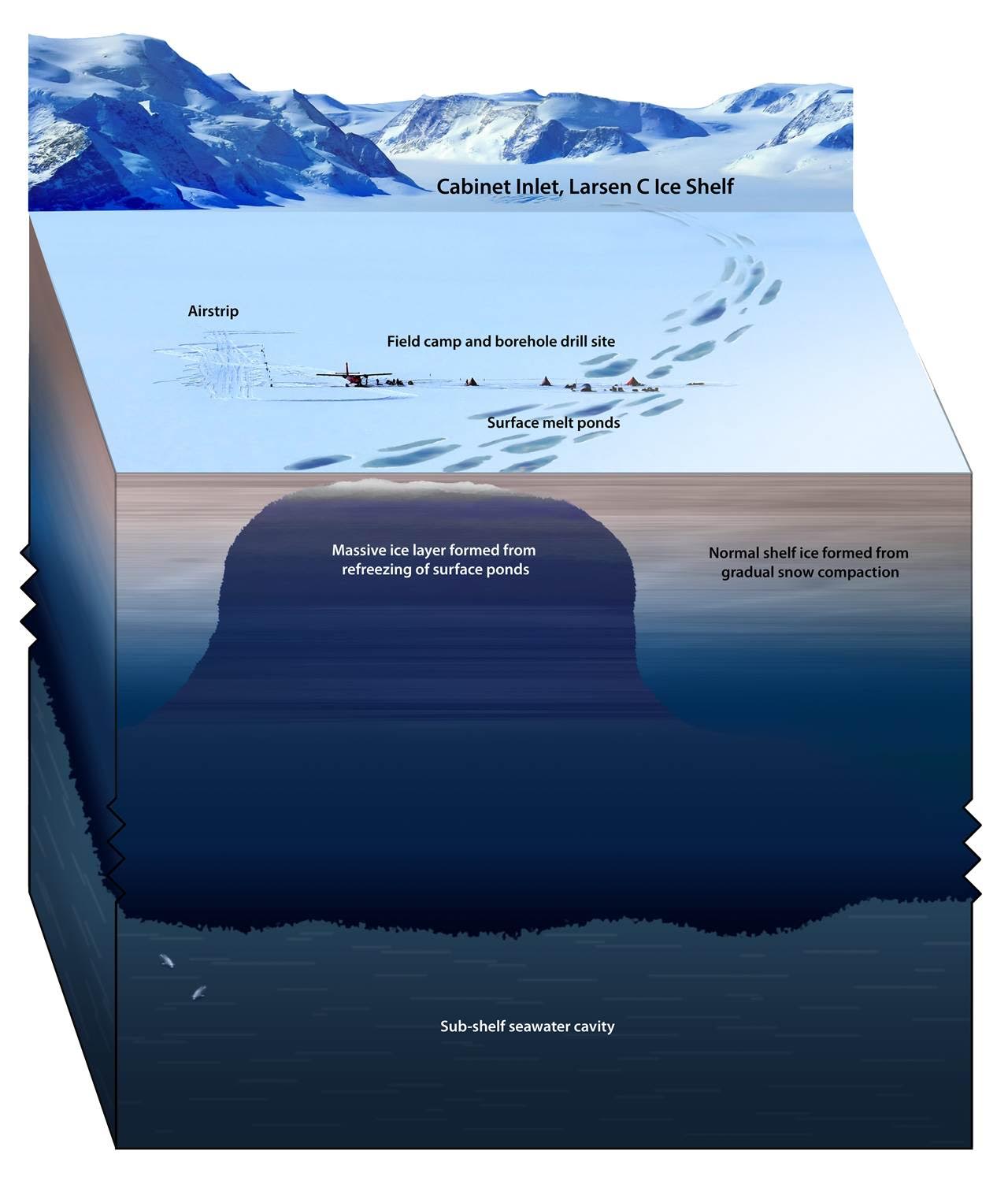
The discovery of a massive ice layer beneath the surface at Cabinet Inlet on the Larsen-C ice shelf, Antarctic Peninsula. Source: Hubbard et al., (2016).
Cause for concern
The vast icy layer below Larsen C is a concern, says Hubbard. It is warmer than the compacted snow it replaced because of the latent heat that is released as the percolating meltwater refreezes at depth. Thi, in turn affects how the ice moves, Hubbard explains:
Hubbard and his team installed a string of instruments to take measurements within the icy layer, returning to collect the data a year later. They found temperatures of between -5C and -10C, a full 10C above what they expected for this depth range. Hubbard says:
Using ground-penetrating radar and satellite instruments, the scientists estimated that the icy layer was 16 km wide and several kilometers long. While icy layers have been found elsewhere in Antarctica, the Larsen-C discovery is exceptionally large. Hubbard tells Carbon Brief:
Nevertheless, it will be sometime before the consequences for Larsen-C are fully understood, Hubbard adds:
Other recent research points to a thinning of Larsen C by four metres from 1998-2012, putting it at greater risk of collapse. Ice shelves can also melt from underneath as the ocean warms.
Hubbard suspects vast icy layers could be discovered in many of Antarctica’s other ice shelves in the coming decades. He says:
Since ice shelves float on the water, when an ice shelf collapses entirely it doesn’t directly affect sea levels. But once an ice shelf disappears, there’s little to stop the glaciers behind it from flowing into the ocean, causing sea level to rise faster.
A life less ordinary
Hubbard’s research has led him to some of the world’s most inhospitable landscapes. Part of the reason the ice layer below the surface of Larsen C hasn’t been discovered until now, he says, is because of the logistics of carrying out this kind of research in such a challenging place.
But Hubbard looks back fondly his quarter-century of polar expeditions, telling Carbon Brief:
Hubbard’s services to science were honoured earlier this year, collecting the distinguished Polar Medal for his outstanding contribution to science under conditions of extreme hardship.
At the time, Prof April McMahon, vice-chancellor of Aberystwyth University called the award “a just recognition of a life dedicated to the discipline.” She added:
Despite the challenges, Hubbard says always seems to go back for more. Though what keeps drawing him back is a mystery, he says:
Main image: Researchers walking up a snowy ridge overlooking the ocean. Credit: Professor Bryn Hubbard, Aberystwyth University.
Hubbard, B. et al. (2016) Massive subsurface ice formed by refreezing of ice-shelf melt ponds. Nature Communications. DOI: 10.1038/ncomms11897
-
Discovery exposes fragility of Antarctica's Larsen C ice shelf
-
Scientists have unearthed a 100m-thick river of ice beneath Antarctica's Larsen C ice shelf, which they fear could accelerate its path to eventual collapse


